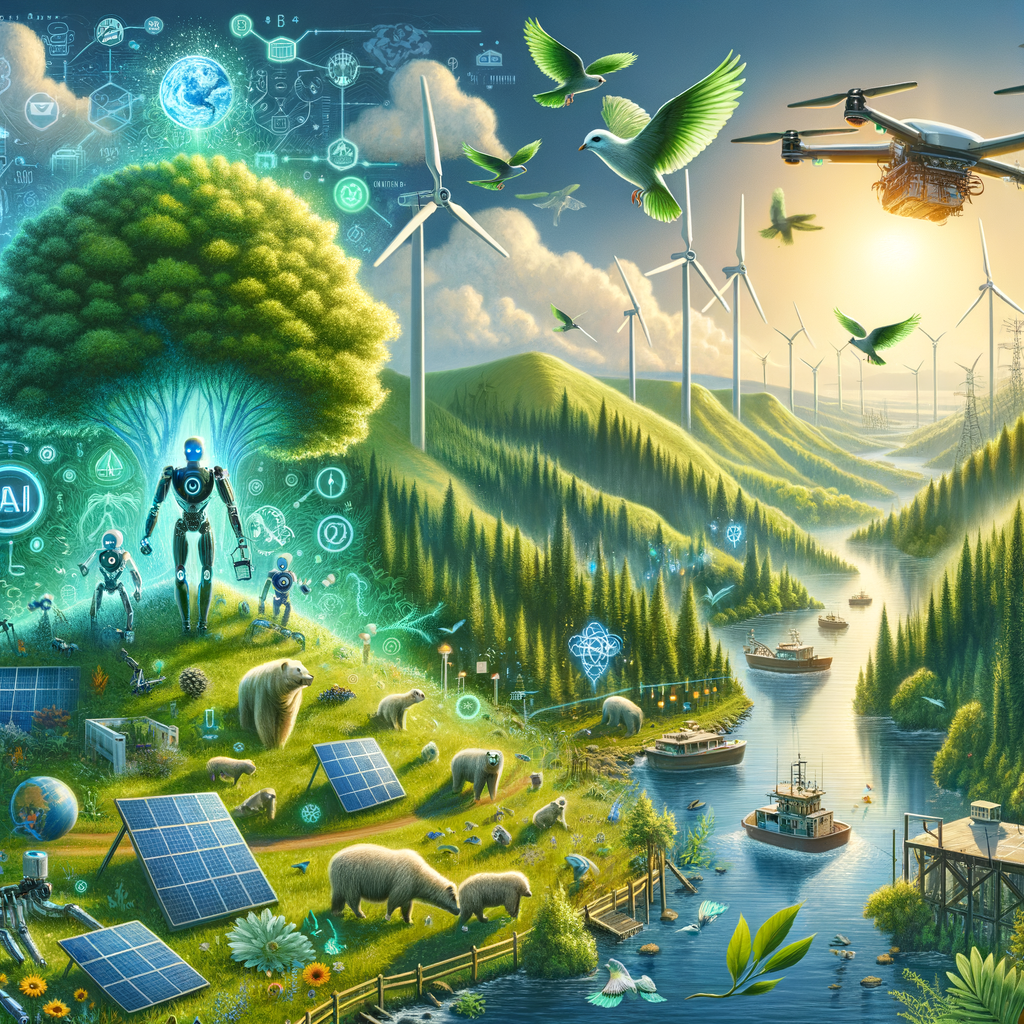Did you know that artificial intelligence is helping save endangered species with 90% greater accuracy than traditional methods? As our planet faces unprecedented environmental challenges, AI has emerged as a powerful ally in conservation efforts. I’m excited to explore how this groundbreaking technology is transforming the way we protect and preserve our natural world!
Understanding AI’s Role in Our Planet’s Protection
Just as a skilled naturalist observes and interprets the environment, artificial intelligence has emerged as a digital guardian of our natural world. Much like how our smartphones use facial recognition to identify friends in photos, AI systems are now scanning vast wilderness areas to monitor endangered species and track ecological changes.
Powering Conservation with Smart Technology
Imagine having thousands of expert naturalists working 24/7 across every forest, ocean, and mountain range. That’s essentially what AI provides through its core technologies – machine learning algorithms that can spot patterns in nature, computer vision systems that can identify species from photos and videos, and predictive analytics that can forecast environmental changes before they become critical problems.
Breaking Down Implementation Barriers
Of course, deploying high-tech solutions in remote wilderness areas isn’t without its challenges. Limited internet connectivity, harsh weather conditions, and the need for rugged equipment often test our ingenuity. However, these obstacles have led to creative solutions, such as edge computing devices that can process data locally and solar-powered sensors that can operate autonomously for months.
AI in Action: Real-World Conservation Efforts
Keeping Eyes on Wildlife
Thanks to AI-powered camera traps and drone systems, we’re now able to track animal populations with unprecedented accuracy. For instance, in African savannas, machine learning algorithms are helping rangers predict poacher movements, while in the oceans, automated systems monitor whale populations and alert ships to avoid collisions.
Healing Our Planet’s Lungs
When it comes to habitat preservation, AI is like having a sophisticated medical imaging system for Earth. Satellite imagery processed by AI can detect early signs of deforestation, monitor the health of coral reefs, and guide reforestation efforts by identifying the most suitable areas for planting trees.
Fighting Climate Change with Data
By analyzing vast amounts of climate data, AI systems are helping us understand and predict weather patterns with greater precision than ever before. This technology is proving invaluable for communities preparing for extreme weather events and helping policymakers make informed decisions about climate action.
Innovations in Environmental Intelligence
Eyes in the Sky and Ears on the Ground
Modern conservation efforts combine satellite technology with ground-based sensor networks, creating a comprehensive view of ecosystem health. Think of it as a fitness tracker for the planet, constantly monitoring vital signs and alerting us to potential problems.
Making Sense of Nature’s Big Data
Just as social media platforms process millions of user interactions, environmental AI systems analyze countless data points from animal movements, weather patterns, and ecosystem changes. This helps scientists understand complex environmental relationships and make better-informed conservation decisions.
Measuring Success and Looking Ahead
Stories of Impact
From saving endangered rhinos in Africa to protecting rainforests in South America, AI-powered conservation efforts are showing promising results. For example, machine learning models have helped increase the accuracy of identifying species in camera trap images from 40% to over 95%.
The Road Ahead
Exciting developments in quantum computing and advanced sensors are opening new possibilities for environmental protection. However, we must also address challenges like data privacy, ethical AI use, and ensuring these technologies benefit local communities who are the true stewards of their environments.
Tomorrow’s Conservation Tools
Emerging technologies like blockchain for wildlife trafficking prevention and AI-powered acoustic monitoring systems are showing tremendous promise. These innovations, combined with growing environmental awareness, are creating new opportunities for more effective and efficient conservation efforts.
Conclusion
The integration of AI in environmental conservation represents a pivotal shift in our ability to protect and preserve our planet. By harnessing these powerful technologies, we’re better equipped than ever to address critical environmental challenges. What role will you play in this technological revolution for conservation?

